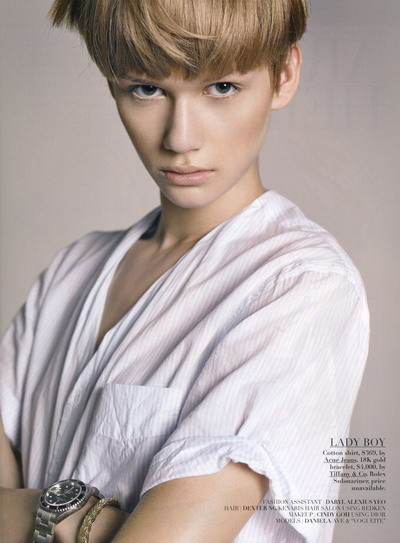Throughout our class discussions, we've established the Masculine/Feminine code: traits and characterisitics that are traditionally associated with one sex/gender or the other. We've realized that splitting the board down the middle with traits overly identified with one, but not both, sexes is not very difficult. Generally speaking, the societal perspective places any given ideal in one category or another, but never both. This pattern has repeated through our discussions-- biological sex, as determiend by society, determining a "fitting" sexual orientation, identity, or plain ol' personality traits.
We, as a society, both consciously and unconsciouly place people in one gender category or another (or sex category, but usually gender during day-to-day interactions). It goes without saying that this is a problem. That our continued use of stereotyping and instant judgment will only lead to negative consequences.
However, to play devil's advocate, I think modern society has arguably begun to move in the correct direction. Our continued fascination with and acceptance of androgyny is a perfect example. The term didn't even exist until the mid 70's, but has recently become both widely used and somewhat accepted.
The word "androgyny" comes from the Greek; Andro meaning man and gyn woman. The premise of androgyny is that those lists of purely masculine or purely feminine traits no longer exist. Society has a way of forming boxes and stereotypes of what it expects from either gender, but androgyny, while not being a different biological sex, is a new take on gender identity. Androgyny assumes that one does not have to be either blunt OR tactful, dominant OR submissive, dependant OR independant; rather, that different traits are applicable at different times.
This trait androgyny is often referred to as psychological anydrogyny, but physiological androgyny also exists when one exhibits physical traits (not necessarily sexual traits) of both sexes. Some people look androgynous but are not true androgynes. True androgyny is not merely a fashion statement or a look-- many androgynes do not look so. Androgyny is a new movement, a more non-polarizing gender identity.
I don't think we're anywhere near to solving the gender-box problem, but I think recognizing the spread of androgyny and other movements like it that blur the lines between genders is important :)


Blogger wont let me put pictures in comments, but can we all just take one blissful moment of our day and go look up the lovely and genderbending Tilda Swinton?
ReplyDeleteAgreed. Breath-taking.
ReplyDelete